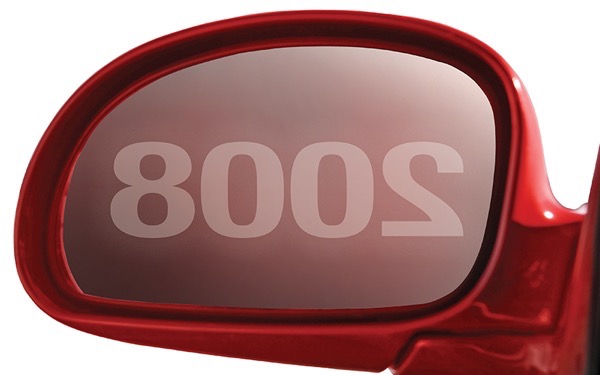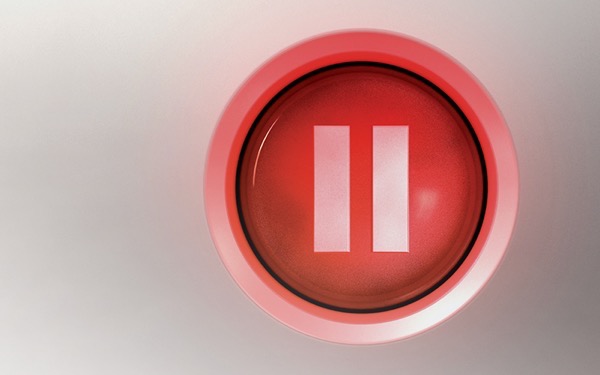Cause for Pause
By Stewart Schley
Defying conventional wisdom, cable just might be turning the tables on over-the-top video
Ah, 2008. We remember you well.
Turns out that was the peak year for pay-TV in the U.S. Leichtman Research Group points out 87 percent of U.S. homes were connected to a cable or satellite TV system.
Since then, the trajectory has gone south. Penetration of U.S. homes dwindled ever-so-slightly, to 86 percent, by 2013. Then, stuff started happening. Coincident with the over-the-top video revolution, traditional pay-TV began to do what all of us do as we age: exhibit early warning signs of falling off our game. Now, “only” 78 percent of homes get a traditional pay-TV service from the likes of Comcast, Charter Communications, Altice USA, Dish or DirecTV.
Those quote marks around “only” serve as a reminder that trends are one thing and achievement is another. The unimpeachable fact is that over time, the cable industry has authored a remarkable, culture-changing progression that resulted in three-fourths of American homes replacing over-the-air TV antennas with an alternative means to receive television. (Pause for applause.)
Still, nobody loves a downturn, and the numbers are what they are. Worse yet, there’s no indication the decline is over.
Or is there?
An interesting behind-the-scenes wrinkle began to emerge this fall as several indicators suggested some of online video’s swagger may be eroding.
First, there was the disclosure from AT&T that the DirecTV Now online video service encountered significant hiccups during the summer. For the July-through-September quarter, AT&T added only 49,000 net subscribers to DirecTV Now, compared with 342,000 in the three months prior and 296,000 in the comparable year-ago time frame.
AT&T did its best to explain away the slowdown, saying it put the brakes on aggressive promotional deals while imposing a $5 per month price increase on the DirecTV Now entry-level package. (Pause for recognition of prudent economic management here.)
Then, there was an off-the-cuff comment from NBCUniversal’s CEO Stephen Burke. Reviewing NBCU’s third-quarter performance during a call with investment analysts, Burke noted something interesting: growth in the “virtual” multichannel video programming distributor (or MVPD) category appeared to be slowing. Over the previous 12 months, NBCU had seen meaningful growth in the number of subscribers NBCU’s networks reached via alternative video services like Hulu with Live TV, Sling TV and YouTube TV. For the latest quarter, though, the trend line was flat. “I think maybe the growth of the virtual MVPDs is starting to plateau,” Burke said. (Pause for studious contemplation.)
Finally, there was a largely overlooked metric and associated commentary from Charter Communications. Charter recorded a net loss of 66,000 video subscribers during the third quarter, lowering its total to 16.1 million. Granted, any decline is unwelcome news. But remember: Trends matter. The latest quarterly loss moderated from the preceding quarter (73,000) and the 104,000 Charter’s systems lost in the year-ago comparable period. (Pause for slight breath of relief.)
Charter thinks the question of “why” is partly answered by something it has quietly done in recent months: introduced a new pair of video services that speak the language of over-the-top video. The first, Spectrum Stream, provides a smallish subset of cable channels plus over-the-air signals and digital music for $21 per month. It’s not a glutton-vision tier with hundreds of channels, but that’s sort of the point. Stripping off expensive channels like ESPN and applying an affordable price point is the same general concept new online video services like Philo or AT&T’s WatchTV are angling to achieve. Charter’s calculation: Why let outsiders worm their way in to our customers’ video lives? Why not join the revolution, rather than resist it?
The same philosophy guides the second new video offering, Spectrum Choice. Here, things get interesting. With almost no fanfare, Charter has gone where many people have long suggested the cable industry should go: to a place that looks a lot like an a la carte world. The $25 per month Choice bundle pairs over-the-air stations and digital music with a choose-your-own collection of 10 channels; ESPN is among those available. (Pause for realization that this is revolutionary.)
Both services are available only to Charter’s high-speed Internet customers, which makes it easy for consumers to compare the merits of Charter’s offering with build-your-own blends of an Internet service and a non-aligned video service (say, YouTube TV or PlayStation Vue). The range of channels is more limited with Charter’s new streaming bundles than with some virtual MVPD lineups, but the convenience factor — one provider, one bill, one service agent to call when things go kerflooey — is attractive. So is the ability to exert some influence on the composition of the package.
An important caveat here is that Charter is acquiescing to relatively low revenue-per-subscriber levels for new streaming video customers. $25 per month is a long way from top-end pay-TV packages that cost more than $150 per month. But if the choice is between losing a video connection altogether and attracting subscribers with an in-your-face streaming video service (take that, Hulu!), maybe the better path is to preserve the relationship, not concede it to somebody else.
It’s possible that the Q3 developments are temporary, and that over-the-top video subscriber growth will resume with a vengeance in 2019 and beyond. But history suggests something else.
The cable industry has a convincing track record for watching from the sidelines as threats rise, analysts freak out and bankers worry, only to emerge ahead at the finish line. The signature example is the DVR. Outsiders all but wrote off cable as a participant in the digital video revolution in the late 1990s as upstarts TiVo Inc. and Replay Networks presented the world with an astonishing new machine that ate up TV content and spat it back whenever somebody wanted to watch.
That was then. Now, the largest category provider for DVR technology is the cable industry. (Pause for recognition that you already knew that.)

There are other examples: One is the sophisticated digital screen interface. Netflix’s was the bomb at one point, but X1 is as good as anybody’s today. Or the practice of exporting video to portable devices. Early online video players used to have this market sector to themselves. Now cable companies stream channels to devices as a routine practice. Even over-the-top video services are being subsumed into the cable environment. Netflix is a button on the cable set-top and YouTube nestles comfortably within the menu.
Traditional pay-TV penetration is in decline; everybody gets that. But the contours aren’t etched in stone. Just because the video environment is changing doesn’t mean legacy players are out of the game. I’ll bet pay-TV penetration remains north of 75% a year from now. And who knows? Defying a presumably immutable trend line, over time it might find its way back to where it was in 2008 (Pause for burst of joy.)
 Stewart Schley,
Stewart Schley,
Media/Telecom Industry Analyst stewart@stewartschley.com
Stewart has been writing about business subjects for more than 20 years for publications including Multichannel News, CED Magazine and Kagan World Media. He was the founding editor of Cable World magazine; the author of Fast Forward: Video on Demand and the Future of Television; and the co-author of Planet Broadband with Dr. Rouzbeh Yassini. Stewart is a contributing analyst for One Touch Intelligence.
credit: Shutterstock.com




